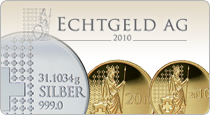
Switzerland and the monetary crisis in Europe
Author: Prof. Antal E. Fekete
Adam Smith’s Real Bills Doctrine
Banks are also confronted with the problem of asset quality. Prior to World War I banks had guidelines prescribing that the only eligible assets were gold plus real bills maturing in gold in ninety days or less. Bonds, stocks and mortgages were ineligible. The marketability of real bills is superior to that of any of these, because they become gold upon maturity in a few weeks’ time. They represent self-liquidating credit that is paid out of the proceeds of the sale of the underlying merchandise. Real bills represent goods in most urgent demand on the way to the ultimate consumer. This includes food, clothes, and fuel, the demand for which is changing with that of the seasons (explaining the need for limiting maturity to 90 days). The marketability of real bills is demonstrated by the fact that they circulate through endorsing. Another word for selling a real bill is to discount it. The buyer never pays the face value of the bill, but only the value discounted by the number of days remaining to maturity. The rate of interest has nothing to do with the rate of discount. The former is governed by the propensity to save. Paradoxically, the latter is governed by the propensity to consume. In either case, the relationship is inverse: the higher the propensity, the lower the rate.
Real bills could circulate even in the complete absence of banks. Such circulation will arise spontaneously in case of a complete breakdown of the world’s banking system. That is no idle threat. At any rate, real bills are the best earning assets a bank can have. There is always great demand for bills with three good signatures. Banks all over the world scramble to buy them as evidences of self-liquidating credit.
Note the requirement that a real bill must mature in gold. The suggestion that a bill could just as well mature in irredeemable currency is preposterous. The marketability of irredeemable currency is inferior to that of a real bill, so the former cannot be the end result of the maturation process.
Nowadays it is fashionable to disparage real bills and deliberately confuse “fractional reserve” banking (whereby banks confine their assets to gold plus real bills maturing in gold) with unsafe banking. It is a tragic mistake to dismiss real bills as inflationary. In fact, real bills rise together with the rise of consumer goods, and expire together with their disappearance in consumption. At no point in time, there are more real bills in circulation than there are goods on their way to the consumer.




